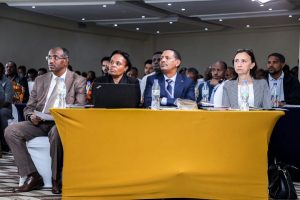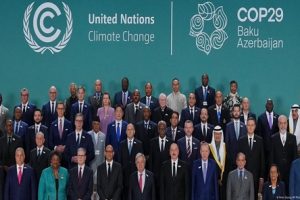BY GETACHEW MINAS
Ethiopia owns large forest resources. The annual deforestation rate in Ethiopia has declined over time. According to World Bank (WB), Ethiopia owns millions of hectares of high forests, woodlands, bush lands and plantations. These forest resources together cover about 53 percent of the country’s landmass.
And studies show that the human factor is mainly responsible for forest degradation in the country. It is pointed out by Bekele and Yirdaw that factors of deforestation include population growth, poverty, and unstable land-tenure system, lack of forest and land-use policies and socio-political instability.
In a broad sense, the forestry sector is characterized by weak regulatory frameworks expressed in terms of mild law enforcement, institutional instability, poor human and logistics capacity, and meager budgetary allocation.
The sector experienced several rounds of organizational restructuring, which has resulted in fast “turnover” of employees, discontinuation of programs and projects, confusion of responsibilities and mandates, misplacement of documents and files, and progressive weakening of operations. In Ethiopia, property relations over such resources like forests, water bodies, fish, wildlife, and other natural resources remained loosely defined.
The lack of stability of rural institutions has affected people’s willingness to invest. This contributed to inefficient management of land and forestry practices. In earlier times, the Imperial Government encouraged agricultural expansion through individual forest resources ownership for the purpose of increasing its tax revenue base.
This was followed by the rule of the Socialist Government that nationalized all forest resources of the country. It made itself, not only the exclusive owner, but also the sole forest developer. After that, in sharp contrast to the previous years, the next government retreated from its obligations as forest custodian and developer without putting appropriate institutions in place.
The centralized approach adopted by the successive governments was not consistent with the aspirations of the people. The management and development of forest resources in Ethiopia appeared to be incompatible with communal perception of “access rights” to forest products and their demands for forest ownership.
The approach of the government also undermined the roles of local communities, their traditional institutions and knowledge in forest management practices. It considered local communities as destroyers of the forests.
Without the legal recognition of the right to use forest products, local people have neither the interest nor the courage in protecting and developing forests. Such systems would rather generate an incentive structure that force locals to irresponsibly exploit forests. Successive governments also failed to allocate sufficient skills and economic resources to sustainably manage nationalized forests.
Consequently, forest resources belonged to the government but they were open for all sorts of exploitation. At a later stage, Participatory Forest Managements (PFM) was introduced as one of the solutions to solve the problems of access to forest resources and promote sustainable forest management in the country through community participation.
Some experiences from around the world show that a shift from socialist to private ownership of forests was sustainable and productive. Participatory forest management (PFM) resulted in successful forest conservation and development.
Based on lessons learnt from those who succeeded, PFM was introduced to Ethiopia by some NGOs and donor agencies, notably FARM Africa, SOS Sahel, GTZ and JICA. These organizations attempted to respond to the prevailing forest management problems in Ethiopia through the introduction, adaptation and establishment of PFM projects.
These pilot PFM projects attempted to introduce the following: (i) devolution of certain bundles of property rights from the state to the community, (ii) allowing local people to manage the forest resources sustainably, and (iii) partial utilization of the forest resources for livelihood support. Indeed, the introduction of PFM was expected to achieve the dual goal of contributing to the sustainable management of the forest resources and the improvement of the socioeconomic status of the local community.
It is useful to draw lessons from experiences that can be applied in other areas in the future. These lessons relate to the contribution of PFM to forest conservation and the improvement of the socioeconomic conditions of people who depend on the forest.
The PFM projects have been designed with the objective of improving the livelihoods of forest-dependent poor, disadvantaged groups and women. The projects focused on the improvement of the efficiency and effectiveness of land use, through participatory forest management.
The PFM project has the following overall objectives. First it is to contribute to the long term conservation of forest ecosystems in the area through the development and establishment of new systems of forest management.
Secondly, it is to build the capacity of government staffs and rural communities to manage natural resources in a sustainable way, in management partnership; thirdly it is to sustain and/or increase income opportunities from improved natural resources management and diversified livelihoods, and lastly it is to catalyze the adoption of PFM within Ethiopia’s forest policy and practice.
The project was also designed with two approaches to sustainable forest management. These include establishing community level forest management systems and promoting forest-based livelihoods; and introducing and supporting other non-forest-based alternative livelihoods.
It was assumed that the alternative livelihood activities and associated incomes “replace” forest-dependent livelihoods and thus reduce the pressure on the forest resources. Non-forest-based livelihood activities focus on the promotion of crop variety improvement, horticulture, poultry breed improvement, sheep fattening, soil and water conservation, and goat rearing. Forest-based livelihood activities focus on honey, spices, and forest coffee.
The overall impact that the project sought to achieve was the establishment of a “sustainable” forest management system for environmental conservation “linked” to rural livelihood. At the beginning, the project carried out a comprehensive stakeholder analyses and detailed survey of traditional/customary rules governing forest access to identified participants of the project.
It also employed participatory criteria for development and endorsement against which candidates were screened for membership. This system identified forest dependent households for assistance by Forest User Groups (FUGs).
The FUGs were recognized by local authorities and entered into agreement with them to take the responsibility of managing defined areas of the forest in a sustainable way. Following their establishment and legally endorsed access, FUGs developed their own bylaws that governed their own administration and forest management activities.
In this manner, they achieved legal status that allowed them to sue in courts those who would illegally harvest products in their designated forest areas. The introduction of PFM in Ethiopia as a system of forest management appears to have achieved the dual purposes of positively affecting the forest conservation and management of livelihoods of the participant local communities.
Similarly, it is essential to include about its achievement continuity. The continuity of PFM achievements hinges on the cooperation of the local people, who were convinced of the “user-rights” to the forest resources. Subsequent empowerment in decision-making regarding the forest strengthened their confidence.
Compared to the adjacent state forest site, seedling and sapling densities are “increasing” in the PFM forests. Similarly, the vegetation structure of the PFM forest exhibited a better structure that show a healthy distribution compared with the state forest block. For Gobeze et al, it seems to have achieved success because of the regulated access and the forest development activities communities exercised in the forest.
These findings conform to several similar experiences in other countries. For instance, Kajembe et al studied vegetation structure before and after PFM in other countries and reported a remarkable increase in the density of trees, seedlings and saplings following PFM introduction.
Correspondingly, other studies in various places have recorded improvements in productivity and diversity of vegetation following the introduction of PFM. A study in Ethiopia from the PFM projects also reported that seedlings were healthy as they had been neither trampled nor browsed and more regeneration of indigenous plant species was observed.
In summary, participatory forest management (PFM) increased livestock assets of households over time, and this was attributed to better access to grazing land within the forests.
This trend, however, is threat to the future of the forests. There is, therefore, a need to avoid the threat using a land-use system with a “fodder bank” for livestock feeding outside of the forest. The PFM would significantly “reduce” wood-based income generation that protects the forests. It would also regulate wood harvesting with sustainable yield level.
The introduction of PFM increases the extraction of coffee and honey from the forest. Successful PFM redirects the income sources of the local community from “destructive” forest use to sustainable forest production system. Such redirection and improvement of income sources would ultimately achieved better food security.
PFM empowers local people as it enables them to organize themselves and enhance their participation in decision making regarding the management of the forest resources.
PFM also benefits the people as it increases “diverse” income sources that allow better asset accumulation, and less dependence on forests. This indicates that if designed properly, “complementary” activities to diversify income could help reduce pressure on the forest.
However, appropriate measures are needed to maximize benefits from the forest resources and communities should have economic incentives to responsibly manage forests.
The responsible and sustainable PFM depends on the transparent partnership between the members of the forest users and their leaders. In this case, the government should support the efforts of communities and their institutions to responsibly mange these resources by creating enabling environments and ensuring technical and legal support to the PFM.
The Ethiopian Herald January 30/2021





